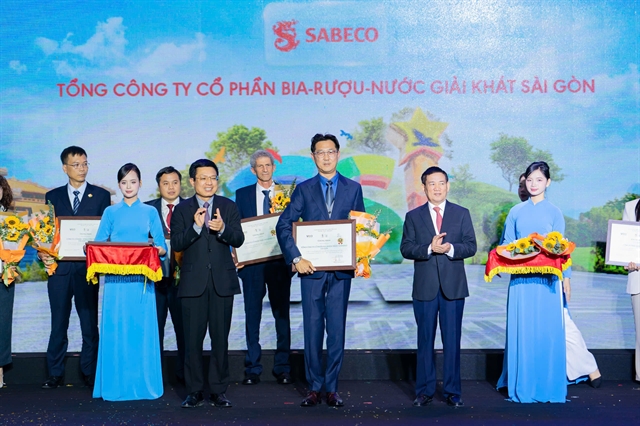 Economy
Economy
.jpg)

|
| Thọ Xuân Airport in Thanh Hóa Province. VNA/VNS Photo |
HÀ NỘI — The Civil Aviation Authority of Vietnam (CAAV) is charting a bold course for the aviation industry from now until 2035, with a vision extending to 2050, based on five strategic pillars: infrastructure, digital transformation, business capabilities, high-quality human resources and a sustainable institutional framework.
The goal is for aviation to become a strategic economic sector by 2035, achieving world-class competitiveness in Southeast Asia and sustained long-term growth.
Việt Nam’s fleet is expected to expand to 300–320 aircraft, including specialised cargo planes. The industry will undergo a complete digital transformation and adopt sustainable aviation fuel, aiming for net-zero emissions by 2050.
Two international aviation hubs are planned for the capital region and HCM City by 2050, ensuring that 97 per cent of the population has access to an airport within a 100 km radius. The infrastructure will be modern, innovative, safe and eco-friendly.
The CAAV emphasises the urgent need to finalise and implement the revised Việt Nam Civil Aviation Law, along with relevant sub-law documents, to establish clear mechanisms and policies, resolve land and infrastructure asset management issues, and encourage social investment in aviation. These measures will create a transparent legal framework to attract resources.
The authority also plans to complete a long-term national airport system plan, integrating it with the country’s socioeconomic development and national defence and security strategies. A key approach is decentralising airport management to local authorities, allowing investment approvals tailored to regional needs.
Major projects such as Long Thành and Gia Bình will be prioritised to relieve congestion, alongside the development of a multi-modal transport system linking major airports.
The CAAV will explore airport cities integrated with logistics and commercial centres to optimise value chains and reduce costs. Modern technologies, including AI, Big Data, and advanced software, will be deployed to enhance flight operations, slot management, and the passenger experience.
The industry will draw on international models to create multifunctional airports that combine logistics, commerce, tourism, and low-cost aviation services. Attracting and retaining high-quality human resources remains a central task for the aviation sector.
International negotiations on aviation agreements will continue to support the open skies policy and expand connectivity, particularly for intercontinental routes to Northeast Asia, Australia, Europe and North America.
Finally, the CAAV aims to strengthen international cooperation, actively participating in ICAO, IATA and other global aviation organisations to enhance knowledge, expertise, skills and technology, contributing to a modern, sustainable and integrated Vietnamese air transport market. — VNS
.jpg)



